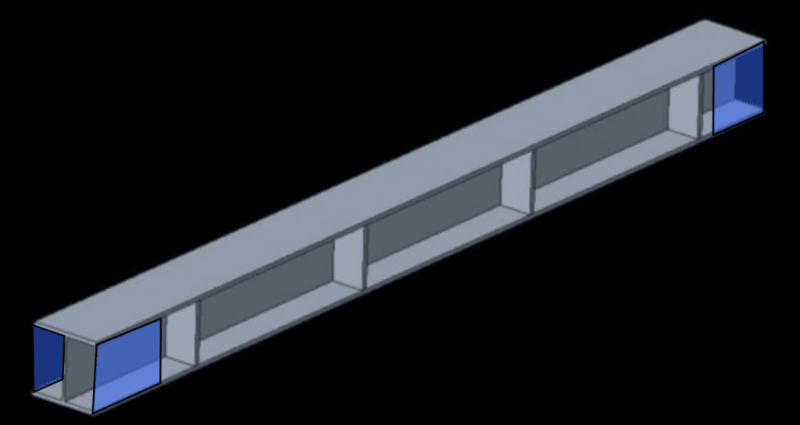planc
Structural
- Mar 3, 2022
- 64

can putting such stiffener plates inside the web and flange (illustrated above) produce restrain against torsion? What is the formula for the spacing of the plates?
Follow along with the video below to see how to install our site as a web app on your home screen.
Note: This feature may not be available in some browsers.
planc said:Where to put the stiffeners plates than for restrain against torsion?

That is correct. In fact this was something I examined just a couple of weeks ago in a real design problem. The design problem arose from a mistake that I made in oversight and resulted in damaged machinery. [flush]TLHS said:In fun thought experiment land where things are completely uneconomical and impractical, I suspect there's a stiffener spacing where they do start to help reasonably with torsion (at somewhere in the range of 0.5 to 2 times the lesser of beam width or depth?), where you've started to significantly restrain against warping distortions and you've got some sort of tension/compressive strut load path between successive stiffeners through the flange and some sort of shear wall type action in the other plane from the stiffeners. It would potentially start acting like a spaceframe truss.
Plates need to go on the outside, ie parallel with web, ie close the section.
Yes. This is essentially the best solution to retrofit the beam. And yes if you use the same thickness as the flange it will essentially give you the same torsional stiffness as a hollow section of that depth. (Though depending on you torsion requirements you might be able to get by with thinner plate or even some plate staggering.)planc said:Do all others agree the description above by Tomfh about strengthening the steel beam against torsion by literally welding a whole one piece plate parallel with web on the outside and close the section? The thickness of the whole one piece plate will be same thickness as the flange. Will this create same torsion strength as hollow section of the same size (if both sides would be whole plated closing them)?
Many ways to explain this. I'll try. In a similar manner to beams where bending is resisted by have a tension and compression side separated by some distance. Where the greater the distance the great the resistance. Torsion is resisted a loop of shear separated by some distance. And I-Beam has forces this loop trough web with very little distance between the loop paths. Circular or square hollow section doesn't have this issue.planc said:In torsion of I-beam. Is it due to the thinner web that is why the top flange can rotate downward or is due to the boundary between top flange and web that makes it want to rotate?
I think it is about time that you go do your own research and calculations to get a solution you are confident in. Otherwise ask somebody in your organisation or hand off the problem to somebody else.planc said:What would happen if you used trusses on the sides made of angle bars instead of whole one piece plate? It's very difficult to transport whole plates.
I summon WArose to this thread!! Hopefully that works. Some time ago, he and I had an extensive debate on this topic. During the course of that discussion, WArose posted the results of some detailed FEM work that he did to study the effect of transverse stiffeners on a torsionally loaded wide flange beam. But, alas, I'm able to dig that up and share it here....
![[smile] [smile] [smile]](/data/assets/smilies/smile.gif) But yes: stiffeners are pretty much useless for restraining torsion. The only reason I got into it is because I had a beam subjected to 100-200 ft-kips of torsion. (Special order wide flanges.) And I was wondering about the weld of the various stiffeners to the beam. (I.e. what force they would have to resist because of the torsion.) Turns out my worries were not justified....because the stiffeners didn't do anything as far as torsion goes. (Not without ridiculous spacing.)
But yes: stiffeners are pretty much useless for restraining torsion. The only reason I got into it is because I had a beam subjected to 100-200 ft-kips of torsion. (Special order wide flanges.) And I was wondering about the weld of the various stiffeners to the beam. (I.e. what force they would have to resist because of the torsion.) Turns out my worries were not justified....because the stiffeners didn't do anything as far as torsion goes. (Not without ridiculous spacing.)